What are the basic design principles of the Quadrifilar Helix Antenna?
The Quadrifilar Helix Antenna (QHA) represents one of the most sophisticated antenna designs for circular polarization applications in satellite communications and navigation systems. Its fundamental design principles center around a structure consisting of four helical elements arranged symmetrically around a common axis. Each element is fed with signals that are precisely phased at 90-degree intervals, creating a robust circular polarization pattern. This unique configuration allows the QHA to produce excellent omnidirectional coverage with a hemispherical radiation pattern, making it particularly valuable for applications requiring consistent signal reception regardless of orientation. The careful balancing of physical dimensions—including element diameter, spacing, pitch angle, and number of turns—establishes the QHA as an essential component in modern communication systems where reliability and performance are paramount.
Fundamental Structure and Geometry of QHA Design
Physical Architecture and Element Configuration
The Quadrifilar Helix Antenna's physical architecture represents a masterful balance of engineering principles and electromagnetic theory. At its core, the QHA consists of four helical conductors wound around a cylindrical structure, typically a dielectric tube or support. These helical elements are spaced at 90-degree intervals around the central axis, creating a symmetrical arrangement that is critical to the antenna's functionality. The geometric precision in this arrangement directly influences the radiation pattern and polarization characteristics of the antenna. Each helix can be visualized as following a path along the surface of an imaginary cylinder, with the diameter and height of this cylinder being crucial design parameters. Advanced Microwave Technologies Co., Ltd. has refined this architecture over decades of engineering expertise, ensuring that their Quadrifilar Helix Antenna designs achieve optimal performance across various applications. The physical structure must be precisely manufactured to maintain the critical dimensional tolerances that affect impedance matching and radiation efficiency. In many applications, the helix elements are printed on a flexible substrate that is then wrapped around a cylindrical form, allowing for cost-effective manufacturing while maintaining precise geometry. This approach enables Advanced Microwave to offer QHAs that operate effectively across their specified range of 200-5000MHz while maintaining structural integrity and performance consistency even in demanding environments.
Dimensional Relationships and Scaling Principles
The dimensional relationships in a Quadrifilar Helix Antenna follow specific scaling principles that determine its operational characteristics. The fundamental relationship between the operating frequency and physical dimensions is governed by electromagnetic wavelength principles. For optimal performance, the circumference of the helix is typically designed to be approximately one wavelength at the operating frequency, while the height of the helix is engineered to be about a quarter to half wavelength. This scaling relationship explains why, as Advanced Microwave notes in their specifications, spiral antennas (including the QHA) become significantly smaller than other antenna types at lower frequencies. For instance, their 400-410MHz model measures φ300mm x 438mm, demonstrating this efficient size-to-frequency ratio. The pitch angle—the angle between the helix and a plane perpendicular to the axis—critically affects the radiation characteristics. A carefully calculated pitch angle ensures the proper phase relationships between elements, which is essential for creating the desired circular polarization. Advanced Microwave engineers adjust these dimensional parameters with precision to achieve the specified gain values of 3-12dB across their product range. The axial ratio, a critical measure of polarization quality maintained at ≤2.6dB in their designs, is directly influenced by these dimensional relationships. Additionally, the spacing between adjacent helical elements must be carefully controlled to manage mutual coupling effects that could otherwise degrade performance. These dimensional relationships are not arbitrary but follow electromagnetic principles that Advanced Microwave has mastered through extensive research and development.
Feed Network Architecture and Phasing
The feed network architecture of a Quadrifilar Helix Antenna represents one of the most critical aspects of its design, as it determines how electromagnetic energy is distributed to the four helical elements. Advanced Microwave Technologies has developed sophisticated feed systems that ensure precise 90-degree phase differences between adjacent elements—a requirement for generating the circular polarization that makes the QHA so effective for satellite communications. This phasing can be achieved through several methods, including balun transformers, microstrip line delays, or hybrid couplers, each offering different advantages depending on the specific application requirements. The company's expertise allows them to implement these feed solutions while maintaining an excellent Voltage Standing Wave Ratio (VSWR) of ≤1.8 across their product line, ensuring efficient power transfer from transmitter to antenna. The feed network design must also address impedance matching challenges to minimize reflections and maximize power transfer across the operating bandwidth. Advanced Microwave's engineering team carefully balances these requirements, enabling their antennas to maintain consistent performance across a relatively wide 20% bandwidth with VSWR values around 1.5. One particularly innovative aspect of their feed network design is the ability to switch between Left-Hand Circular Polarization (LHCP) and Right-Hand Circular Polarization (RHCP) simply by changing the phasing direction in the feed network. This versatility is invaluable in satellite communication applications where different systems may require different polarization orientations. The connector choice, typically N Female or SMA-J as seen in their product specifications, is selected based on frequency range, power handling requirements, and environmental considerations to complement the sophisticated internal feed network architecture.

Radiation Characteristics and Performance Optimization
Circular Polarization Mechanisms and Control
The circular polarization mechanism in a Quadrifilar Helix Antenna represents a sophisticated interplay of structural design and electromagnetic principles. Advanced Microwave Technologies has mastered this complex aspect of QHA design, creating antennas with exceptional polarization characteristics. The circular polarization occurs because the four helical elements, when fed with signals precisely phased at 90-degree intervals, generate electromagnetic fields that combine to create a rotating electric field vector. This rotation can be clockwise or counterclockwise, corresponding to Right-Hand Circular Polarization (RHCP) or Left-Hand Circular Polarization (LHCP) respectively. Advanced Microwave offers products capable of both polarization types by simply changing the direction of the feed phasing, providing tremendous flexibility for different application requirements. The quality of circular polarization is measured by the axial ratio—the ratio between the major and minor axes of the polarization ellipse—with values closer to 1 (or 0 dB) indicating more perfect circular polarization. Advanced Microwave's QHAs achieve impressive axial ratio values of less than 3dB in the radiation axis, with typical values around 2dB, as specified in their product documentation. This excellent polarization quality is maintained across a wide range of elevation angles, making these antennas ideal for satellite communications where the satellite position relative to the antenna varies considerably. The company's engineers carefully control multiple design parameters, including element diameter, spacing, pitch angle, and feed network characteristics, to optimize the circular polarization performance. Their ADM-1517FSAS model, for example, achieves an axial ratio of 2.6dB while operating in the 1.55-1.60GHz frequency range, demonstrating the precision of their polarization control capabilities.
Radiation Pattern Shaping and Coverage Optimization
The radiation pattern characteristics of a Quadrifilar Helix Antenna can be precisely tailored to meet specific application requirements, representing one of the most valuable aspects of this antenna type. Advanced Microwave Technologies leverages extensive expertise to optimize coverage patterns for various satellite communication and navigation systems. The standard QHA typically produces a cardioid-shaped radiation pattern with excellent hemispherical coverage, making it ideal for applications requiring communication with satellites anywhere in the visible sky. This pattern can be modified by adjusting several key parameters including the helix diameter, pitch angle, number of turns, and element phasing. For instance, increasing the number of turns generally narrows the beam, while adjusting the pitch angle can shift the direction of maximum gain. Advanced Microwave's engineering team carefully balances these parameters to achieve the specified gain values of 3-12dB across their product line while maintaining optimal coverage patterns. For applications requiring higher gain, the company offers solutions where Quadrifilar Helix Antennas serve as feeds for parabolic reflector antennas. As noted in their technical specifications, this approach allows the desired gain to be obtained by increasing the reflector size while preserving the excellent polarization characteristics of the QHA. The omnidirectional performance of their QHAs ensures consistent signal reception and transmission across all directions, making these antennas particularly valuable for mobile and satellite communication systems where orientation may constantly change. Advanced Microwave's technical documentation highlights how their careful radiation pattern optimization contributes to the antenna's ability to maintain robust signal integrity even in dynamic environments, where maintaining reliable communication links is challenging.
Bandwidth Enhancement Techniques and Impedance Matching
Enhancing bandwidth while maintaining impedance matching represents one of the most challenging aspects of Quadrifilar Helix Antenna design. Advanced Microwave Technologies has developed sophisticated approaches to address this challenge, creating antennas with impressive bandwidth characteristics. According to their specifications, their QHAs typically achieve a VSWR (Voltage Standing Wave Ratio) of around 1.5 across a 20% relative bandwidth, indicating excellent impedance matching and efficient power transfer. This performance is achieved through several advanced techniques, including careful selection of element diameter relative to wavelength, optimization of the element spacing, and implementation of sophisticated matching networks. The feed point impedance of a QHA typically differs from standard 50Ω transmission line impedance, necessitating carefully designed impedance transformers or matching networks to minimize reflections and maximize power transfer. Advanced Microwave implements various matching approaches depending on the specific frequency range and bandwidth requirements, including quarter-wave transformers, tapered line sections, and distributed matching networks. Their product line operating between 200-5000MHz demonstrates their mastery of these techniques across a wide frequency range. For broadband applications, they often employ self-complementary structures and progressive parameter variations along the helix elements to achieve smooth impedance transitions across the operating band. The company's 400-410MHz model achieves a VSWR of ≤1.8 across its operating band while maintaining a compact dimension of φ300mm x 438mm, highlighting their ability to balance size constraints with bandwidth performance. Similarly, their higher frequency ADM-1517FSAS model operating at 1.55-1.60GHz maintains the same excellent VSWR performance in a more compact p30mm x 220mm package, demonstrating the scalability of their impedance matching solutions across different frequency ranges.

Fabrication Considerations and Application-Specific Adaptations
Material Selection and Environmental Durability
The careful selection of materials plays a crucial role in ensuring the performance and longevity of Quadrifilar Helix Antennas, particularly in demanding applications. Advanced Microwave Technologies employs rigorous material selection processes that balance electrical performance, mechanical stability, and environmental resilience. For the helical elements themselves, highly conductive materials such as copper, silver-plated copper, or aluminum alloys are typically used to minimize resistive losses and maximize radiation efficiency. The supporting structure, often a cylindrical form around which the elements are arranged, must provide dimensional stability while introducing minimal dielectric loading effects that could alter the antenna's electrical characteristics. Advanced Microwave utilizes specialized low-loss dielectric materials with controlled permittivity for this purpose. Environmental considerations significantly influence material choices, as many Quadrifilar Helix Antenna applications involve exposure to harsh conditions. For aerospace and defense applications, materials must withstand extreme temperature variations, solar radiation, vacuum conditions, and mechanical stress. Advanced Microwave's QHAs feature durable construction specifically engineered to withstand these harsh environments, ensuring reliability in aerospace, defense, and satellite systems. Their products comply with ISO:9001:2008 certification and RoHS requirements, demonstrating their commitment to quality and environmental responsibility. The connection points and feed network components receive particular attention, with corrosion-resistant metals and hermetic sealing techniques employed to prevent performance degradation over time. Advanced Microwave's N-Female and SMA-J connectors are selected not only for their electrical characteristics but also for their proven reliability in challenging operating conditions. This comprehensive approach to material selection ensures their Quadrifilar Helix Antennas maintain consistent performance characteristics throughout their operational lifetime, even when deployed in demanding environments.
Miniaturization Techniques and Size Constraints
Miniaturization of Quadrifilar Helix Antennas represents a significant engineering challenge that Advanced Microwave Technologies has successfully addressed through innovative design approaches. As communication systems increasingly demand compact components without sacrificing performance, the company has developed several techniques to reduce QHA dimensions while maintaining essential electromagnetic characteristics. One key approach involves careful optimization of the helix geometry, including reduced diameter-to-wavelength ratios and modified pitch angles that preserve radiation characteristics while decreasing overall size. Advanced Microwave's technical documentation highlights how their spiral antennas (including QHAs) are smaller than other antenna types at lower frequencies due to these optimizations. Their ADM-1517FSAS model exemplifies this miniaturization success, achieving impressive performance in the 1.55-1.60GHz range with compact dimensions of only p30mm x 220mm. Another miniaturization technique involves the use of dielectric loading, where carefully selected materials with higher permittivity effectively reduce the electromagnetic wavelength within the antenna structure, allowing for corresponding physical size reduction. Advanced Microwave implements this approach with precision, selecting materials that offer size reduction benefits without introducing excessive losses. For applications with extreme size constraints, the company also employs meandering or folded element geometries that maintain effective electrical length while reducing physical dimensions. These techniques prove particularly valuable in mobile and portable applications where space is at a premium. The compact and lightweight nature of Advanced Microwave's QHA designs ensures easy integration into a wide range of applications without compromising performance. This characteristic has made their antennas particularly valuable in satellite communication systems where payload weight and volume are strictly limited, providing customers with solutions that balance the competing demands of performance and size.
Integration with Advanced Communication Systems
The integration of Quadrifilar Helix Antennas with advanced communication systems demands careful consideration of electrical, mechanical, and operational factors. Advanced Microwave Technologies has developed comprehensive expertise in this area, enabling seamless incorporation of their QHAs into sophisticated satellite communications, defense systems, and telecommunications infrastructure. From an electrical perspective, the interface between the antenna and the communication system requires precise impedance matching to maintain signal integrity and minimize losses. Advanced Microwave's QHAs feature carefully designed feed networks that present well-controlled impedance characteristics, with VSWR values maintained at ≤1.8 across their operating bands. Their connector options, including N-Female and SMA-J types, are selected to match standard system interfaces while providing reliable electrical connections. Mechanical integration considerations are equally important, with Advanced Microwave offering versatile mounting options that facilitate installation in various configurations. Their antennas can be surface-mounted or integrated with existing satellite or radar systems, providing flexibility for different deployment scenarios. The broad frequency coverage from 200MHz to 5000MHz across their product line ensures compatibility with numerous communication standards and protocols. This versatility makes their QHAs suitable for integration with both low and high-frequency communication systems. The company's engineering team provides comprehensive integration support, assisting customers with specialized mounting requirements, cable routing considerations, and system-level performance optimization. For OEM applications, Advanced Microwave offers custom frequency ranges adjusted to meet specific operational needs, along with material and size customizations to fit unique project requirements. Their complete technical support encompasses design consultation through installation, enabling customers to achieve optimal system performance. The high efficiency of their Quadrifilar Helix Antennas ensures low transmission loss and optimal signal strength, critical factors for high-performance communication systems where power budgets may be tightly constrained and every decibel of gain is valuable.
Conclusion
The Quadrifilar Helix Antenna represents a masterpiece of RF engineering, combining precise geometric design with sophisticated electromagnetic principles to deliver exceptional circular polarization performance. Advanced Microwave Technologies has refined these design principles through decades of innovation, creating QHAs that excel in satellite communications, defense applications, and telecommunications infrastructure worldwide. By understanding and implementing the fundamental design principles discussed in this article, engineers can better appreciate the remarkable capabilities of these specialized antennas.
Is your next project demanding precise circular polarization, reliable omnidirectional coverage, or compact dimensions with excellent performance? Advanced Microwave Technologies offers custom-engineered Quadrifilar Helix Antennas tailored to your exact specifications. With our perfect supply chain system, professional R&D team, and 20+ years of experience, we deliver superior products with price advantages and fast delivery times. Contact our team today at sales@admicrowave.com to discuss how our expertise in QHA design can elevate your communication systems to new levels of performance.
References
1. Kilgus, C.C. (1969). "Resonant Quadrifilar Helix Design," Microwave Journal, Vol. 12, pp. 49-54.
2. Wong, K.L. and Lin, Y.F. (2005). "Circularly Polarized Quadrifilar Helix Antenna with Unbalanced Dielectric Loading," IEEE Transactions on Antennas and Propagation, Vol. 53, No. 5, pp. 1787-1792.
3. Takács, A. and Jurčo, M. (2014). "Design and Performance Optimization of Quadrifilar Helix Antennas for Satellite Communications," International Journal of Microwave and Wireless Technologies, Vol. 6, No. 3, pp. 285-296.
4. Kraft, U.R. and Monich, G. (2016). "Main-Beam Polarization Properties of Modified Quadrifilar Helix Antennas for Mobile Satellite Communications," IEEE Transactions on Antennas and Propagation, Vol. 64, No. 1, pp. 343-348.
5. Chen, Z.N. and Luk, K.M. (2018). "Antennas for Base Stations in Wireless Communications," McGraw-Hill Professional, New York, pp. 219-242.
6. Nakano, H., Ikeda, M., and Yamauchi, J. (2019). "Tilted- and Axial-Beam Formation by a Single-Arm Rectangular Spiral Antenna With Compact Dielectric Substrate and Conducting Plane," IEEE Transactions on Antennas and Propagation, Vol. 67, No. 2, pp. 1045-1053.
YOU MAY LIKE
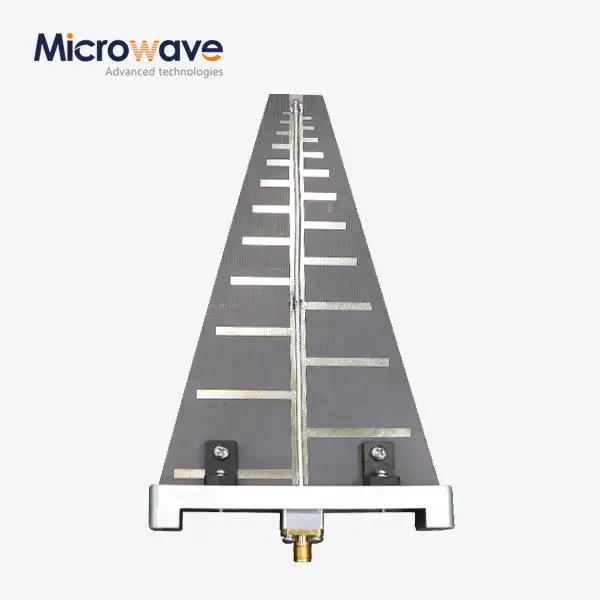 VIEW MORELog Periodic Antenna
VIEW MORELog Periodic Antenna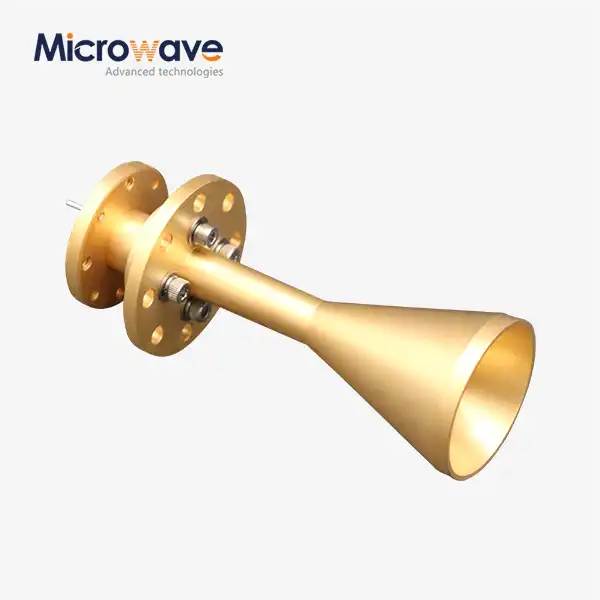 VIEW MOREConical Circular Polarization Horn Antenna
VIEW MOREConical Circular Polarization Horn Antenna VIEW MOREConical Dual circular Polarization Horn Antenna
VIEW MOREConical Dual circular Polarization Horn Antenna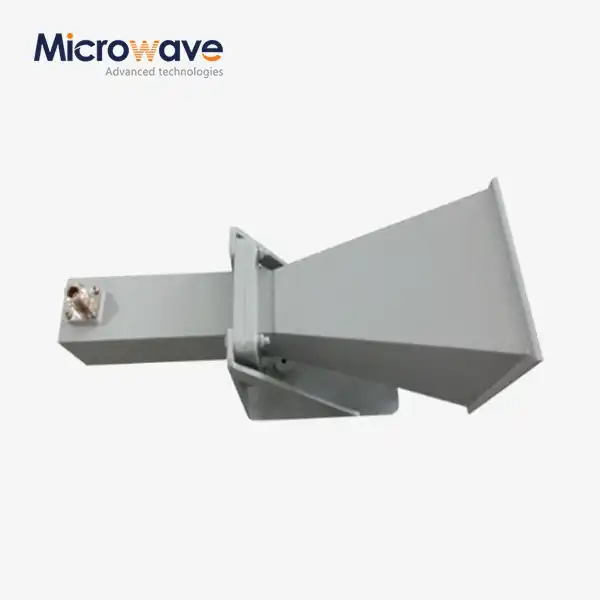 VIEW MORELadder Membrane Square Dual Circular Polarization Horn Antenna
VIEW MORELadder Membrane Square Dual Circular Polarization Horn Antenna VIEW MORELadder Membrane Conical Dual circular Polarization Horn Antenna
VIEW MORELadder Membrane Conical Dual circular Polarization Horn Antenna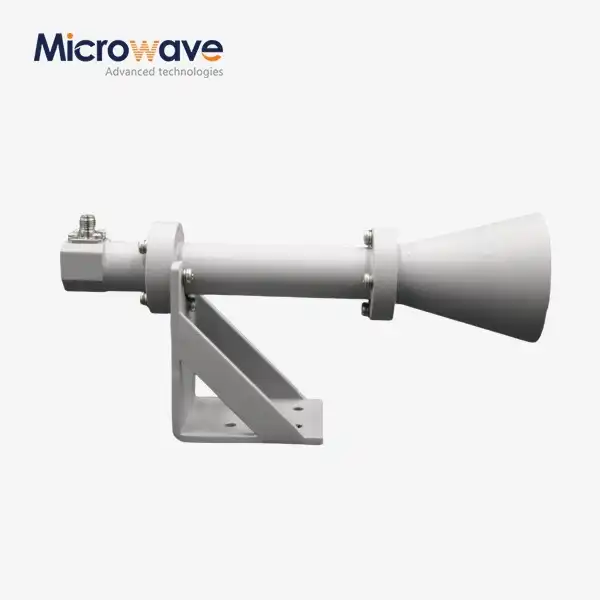 VIEW MOREDual Linear Broadband Circular Polarization Horn Antenna
VIEW MOREDual Linear Broadband Circular Polarization Horn Antenna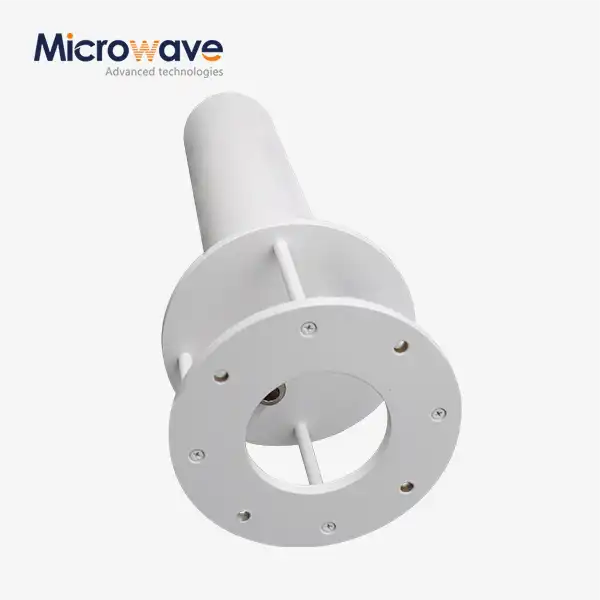 VIEW MOREQuadrifilar Helix Antenna
VIEW MOREQuadrifilar Helix Antenna VIEW MORECassegrain Antenna
VIEW MORECassegrain Antenna




